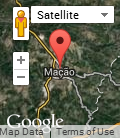
E-learning
Traditional extraction of pine resin in Zimbreira
Pines have been an integral part of the Zimbreira landscape, until a few decades ago.
Aside from being one of the main visual characteristics of the scenery, they also provided an important natural product, the resin.
The commerce with resin helped to integrate the lean rural economy which revolved around the olive harvest, goat breeding and small subsistence farming.
Over time, the requirements of the activity of resin extraction have led to the development of a series of traditional tools, fabricated by the villages’ blacksmiths for the local community.
The extraction of resin was divided into several steps: 1) selection of the pine (by law it had to have a minimum trunk diameter); 2) removal of the cortex (in the low part of pine trunk, where the resin extraction would take place), creation of an opening, the width of which was regulated by law (could not exceed a maximum limit, to avoid compromising the life of the pine); 3) performance of a small incision of the wood; 4) insertion of a metal blade in the incision (to facilitate the flow of resin); 5) positioning, below the incision, of the typical vessel for collecting the resin ;6) large engraving of the wood, above the metal foil inserted before; 7) application of acid in the large incision to facilitate the bleeding of resin. After a few days, the workers came back to the pine to collect the resin in a special vessel using a metal scoop. The collection process in the vessel using the ladle was repeated several times over the course of a few months: every 8-9 days the large incision over the metal foil was reopened and the acid was added which repeated the process of resin collection.
The pine resin thus produced had many industrial uses, primarily in the pharmaceutical and chemical sectors.
Nowadays, eucalyptus has replaced the pine in the local landscape, partly because the fires of 2003 and 2005 have burned almost the entire pine population. As a result, the extraction of pine resin has disappeared as a commercial occupation in this region.
But the technical knowledge of the remaining elderly practitioners of this activity and the surviving tools remain for now as the tangible and intangible heritage of the region.
Resination 1
Resination 2
Resination 3
Resination 4
